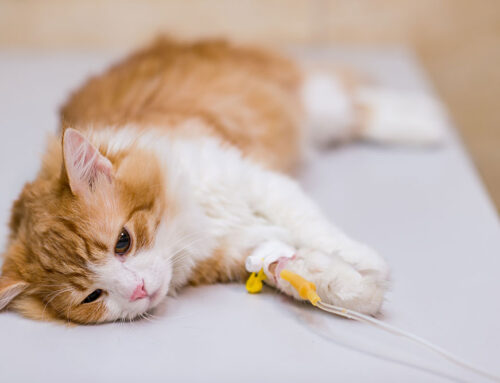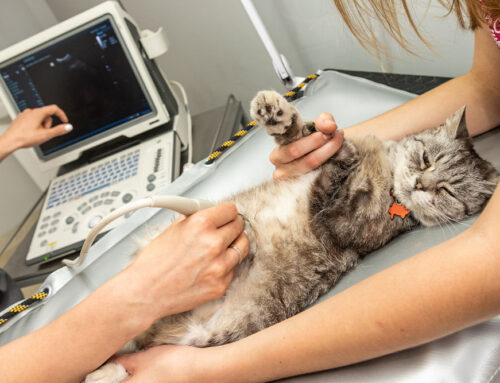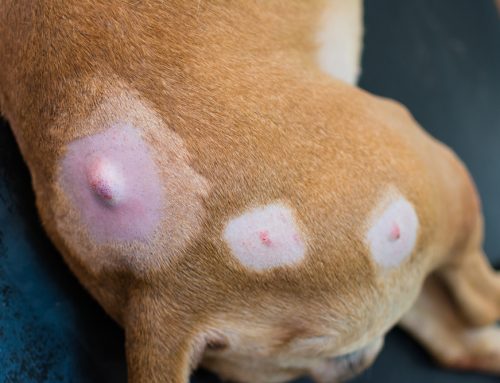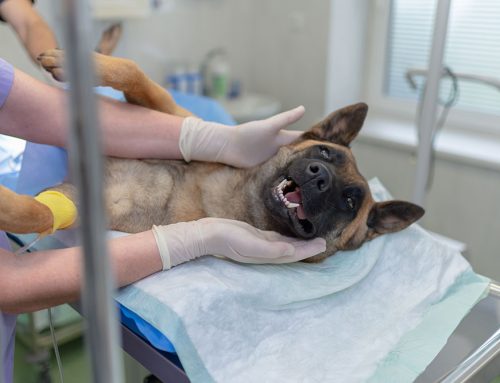Witnessing your pet having a seizure is scary, especially if you are seeing the event for the first time. Pets have seizures because of abnormal brain activity, which may be caused by any number of conditions (e.g., electrolyte problems, metabolic abnormalities, structural brain disease or tumors, toxin exposure, or most commonly—epilepsy—which is recurrent seizure activity with no underlying cause). Nobody is emotionally prepared to see a beloved pet have a seizure, but our Burlington Veterinary Center team wants to ensure you know exactly what to do should one occur.
Identifying seizures in pets
Several pet seizure types can occur, with generalized (i.e., grand mal) or partial (i.e., focal) the most common.
- Grand mal — Generalized seizures involve the entire brain and, therefore, the entire body. Pets typically fall stiffly to one side, paddle or hold all four limbs out straight, snap their jaw, urinate, defecate, salivate, and vocalize. Grand mal seizures may last 30 seconds to several minutes.
- Focal — Partial seizures involve one brain area, and physical manifestations vary depending on the area involved. During a focal seizure, pets may demonstrate one-sided facial twitching, fly-biting, repetitive movements, or unnatural barking. You may mistake partial seizures for obsessive-compulsive behaviors, because of their repetitive nature.
Collapsing is often mistaken as a pet seizure. Heart disease and arrhythmias may cause fainting (i.e., syncope) that results in loss of consciousness and a fall, with no seizure motor activity. Rarely, narcolepsy may cause a collapse (i.e., cataplexy), which is a sudden muscle weakness that results in complete collapse with no loss of consciousness.
Once you have determined that your pet is having a seizure, take the following steps.
#1: Remain calm to help your pet
Generalized seizures are scary—your pet may vocalize and appear in pain—but remember, your pet is not conscious during a seizure and feels no discomfort. Do your best to remain calm so you can guide your pet safely through the event, and determine how best to proceed once the seizure is over.
#2: Ensure your own and your pet’s safety during the seizure
During the seizure, stay away from your pet’s mouth, because they will not have control over their jaw muscles, and may bite out of fear or confusion immediately after the seizure (i.e., the postictal period). If you can safely do so, place a blanket or towel under your pet’s head for cushioning. If your pet is in an unsafe location (e.g., near a ledge or stairwell), gently slide them away from the harmful area.
#3: Time your pet’s seizure and take a video if possible
Time your pet’s seizure or estimate the length of time the seizure lasts, so you can tell your veterinarian later. If another person is available to help, video the event. This information can be especially helpful for focal seizures, to help your veterinarian determine whether your pet is experiencing seizures, behavior disorders, or other potential problems.
#4: Help your pet recover from the seizure
When the seizure is over, your pet enters the postictal period. Some pets recover quickly, while others may need up to 24 hours to return to normal mental function. During this period, ensure your pet has a safe, cool resting place, and access to plenty of water. Monitor your pet closely, and note any behavioral changes after the seizure, to help your veterinarian more quickly diagnose your pet’s condition.
#5: Seek veterinary care for your dog or cat
If your dog’s seizure is their first, and lasts less than two minutes, call your veterinarian once the seizure has ended. They may schedule a visit, or refer your dog for more immediate care, depending on their age, health status, and seizure type, and whether they are exhibiting any other illness signs. If the seizure lasts longer than two minutes or your dog has more than one seizure in a 24-hour period, their body temperature could rise quickly and cause brain damage, so seek immediate veterinary attention.
If your cat has a seizure, seek immediate veterinary care. Epilepsy is common in dogs, but less so in cats, whose seizures usually indicate a more serious underlying condition that warrants urgent action.
#6: Start a seizure journal for your pet

If your pet has periodic seizures without an underlying cause, or has been diagnosed with epilepsy, start keeping a seizure journal. Note the date, time of day, length of seizure time, features, and length of recovery time every time you see your pet seizing or, if possible, when you see evidence they had a seizure you did not witness. The frequency and severity of your pet’s seizures will determine whether your veterinarian prescribes medications to control the events. These medications have side effects that include weight gain and liver dysfunction, so your veterinarian will closely regulate your pet’s dosing, and monitor them through periodic blood work.
Pets have seizures for a variety of reasons, at any life stage. While we hope your pet never experiences a seizure, we want to ensure you are prepared to help them by following our recommendations. Schedule an appointment with our Burlington Veterinary Center team if you have any concerns about your pet’s health—particularly if you suspect they may have had a seizure.







Leave A Comment